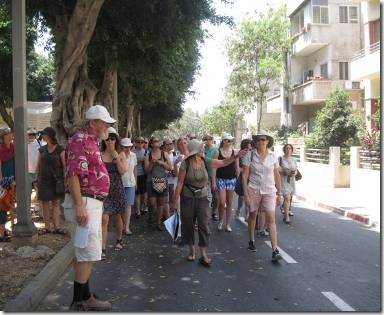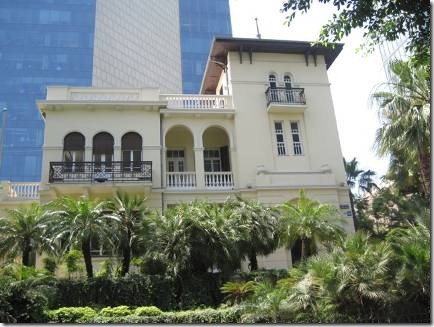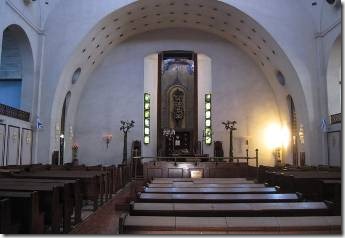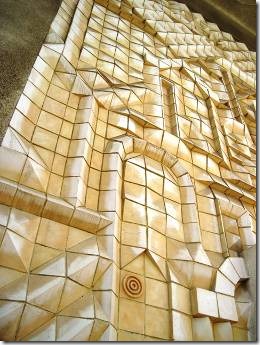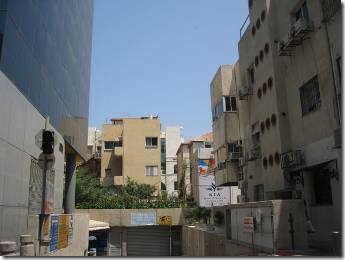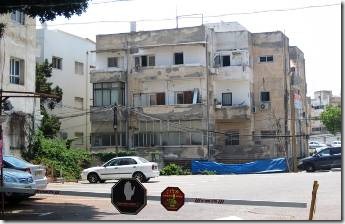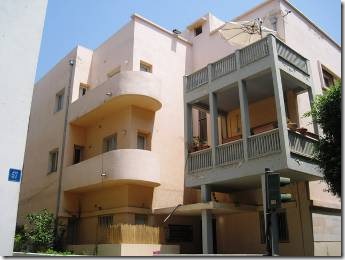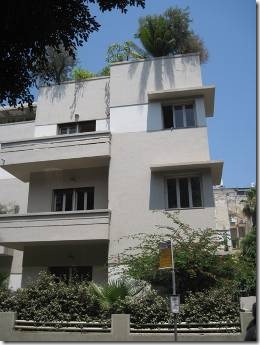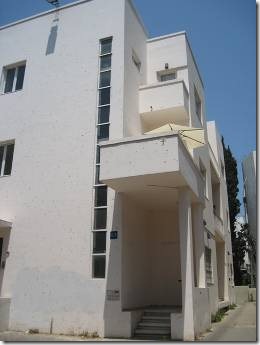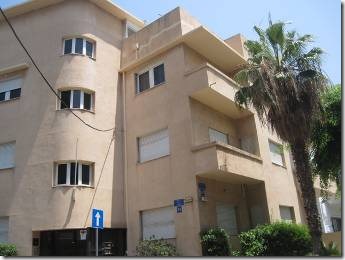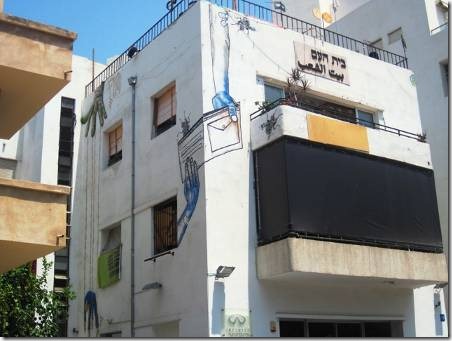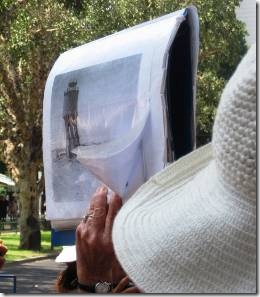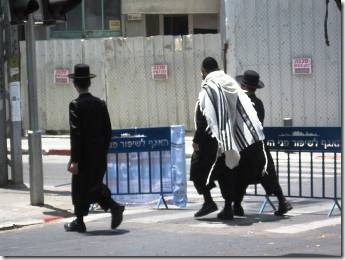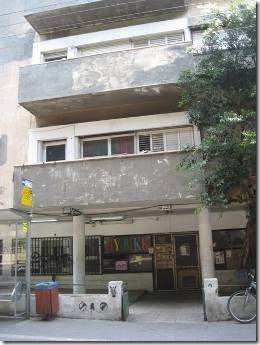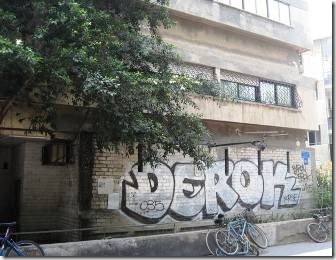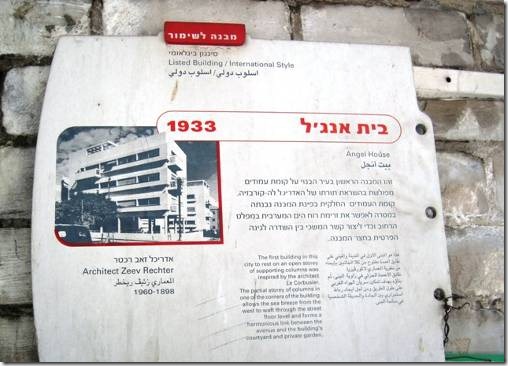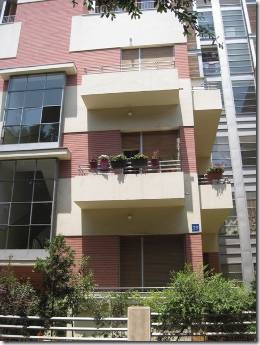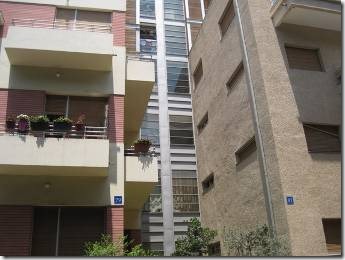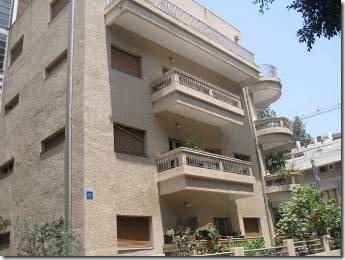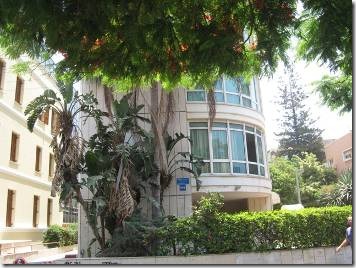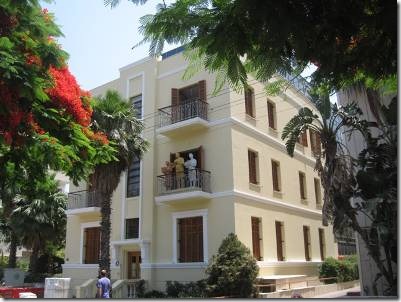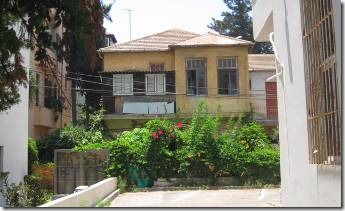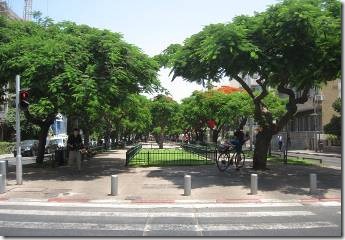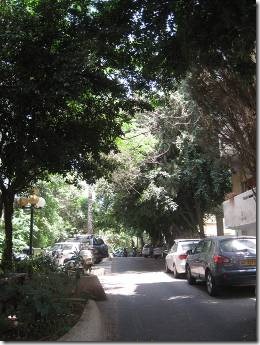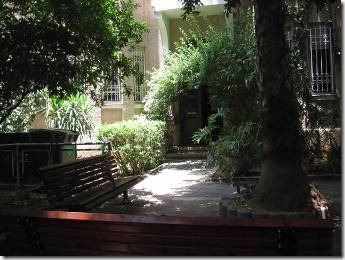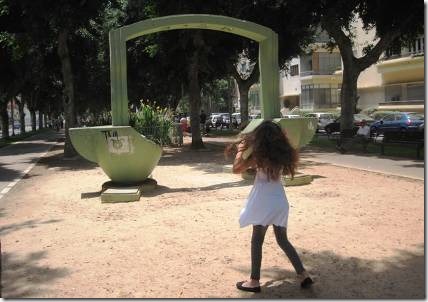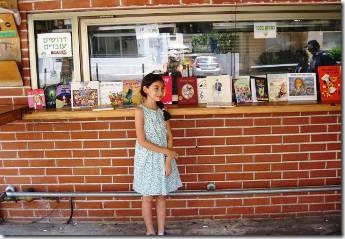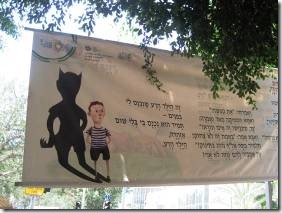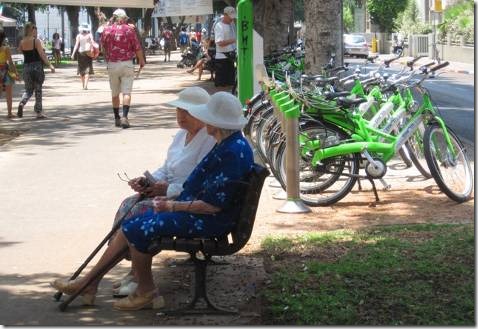Shalom,
Our marina internet comes and goes, though thankfully, with our big booster antenna, we have it most of the time. Today we found out that only Israeli citizens can buy dongels to use with their computer. Eve asked as a kiosk in the mall. We’ll double check at a bigger phone store. We’ve had to register our passports in other countries for local SIM cards but we’ve always been able to get one. Not good. No library card, no SIM card: what’s the deal? No English information in the big, fancy new Ashdod Art Museum. Just because it seems the French XPats paid a big bunch so it’s called Monarts…they still could provide some English along with the French and Russian. Not much to not complain about today!
This is a really long email about our walking tour in Tel Aviv. I put most of the text at the end for anyone who wants to read it.
Ru
Saturday, June 16th , Randal and I took the motorbike to Tel Aviv. On Shabbat, public transportation stops so there’s less roadway traffic. It wasn’t as bad as a week day, but I can’t imagine traveling on other days with double the traffic. We just can’t go fast enough on our little bike. Our friend Eve said she’d teach us some of the back roads so that will help. In Tel Aviv a free walking tour of the Bauhaus area of Rothschild Blvd. is offered every Saturday. It was well done. The guide had a mini-megaphone so you could hear and she knew quite a bit. The “White City” of Tel Aviv was declared a UNESCO Heritage Site in 2004 because of its 4,000 or so white box shaped Bauhaus structures. Some are lovely well maintained buildings, some are being renovated, and some are just beyond repair.
Our tour guide Yona Wiseman (in the center) had moved to Israel from South Africa in 1961.
www.yonawise.net ……..
“The most important thing that you should know about Yona is that she loves Israel : the history, the countryside, the cities and especially the people. She is passionate about Tel Aviv, a unique city that in April 2009 celebrated its 100th year.
Yona has taken courses, listened to lectures and learned about Israel and Jewish history from the time that she first made aliyah in 1961 and culminating in her studies at the Archeological Seminars in Jerusalem, where she qualified as a licensed tourist guide. The learning process has always been backed up by tireless trips to sites around the country. Yona (and her camera) always comes home renewed with excitement for where she has been and what she has seen.
And where is home? Home is in the Yemenite Quarter of Tel-Aviv, where Yona is the expert English-speaking guide concerning her own neighborhood, the recently renewed area of Neve Zedek, International / Bauhaus Architecture in The White City of Tel-Aviv (recognized by UNESCO as a World Heritage Site), Jaffa and the landmarks of the establishment of the modern Jewish state. She is well-versed about the colorful Carmel produce market, the exotic Flea Market and all sorts of wonderful restaurants be they by the sea or in the passageways of Old Jaffa.
Yona has made a wonderful niche for herself as a Tour Guide in Tel Aviv, and you can see by the list of her tours that she knows all the nooks and crannies of her city. You are welcome to join her group tours – some of them Free which is sponsored by the Association of Ministry of Tourism Tel Aviv. You are of course invited to form your own tour at your convenience, and Yona will gladly assist you to put together a tour for special celebrations – Wedding Guests – Bar/Bat Mitzvahs – Birthdays parties, etc.”
The tour begins at 11 am. The meeting place is 46 Rothschild Blvd. at the corner of Shadal Street. Randal and I arrived with about 2 minutes to spare. We’d left Ashdod by 9:30 but had to stop for gas in Jaffa as our gage read E! Luckily Randal can guess exactly where to find fuel so filled up ( it takes one gallon) and raced off to Tel Aviv only getting a bit lost. The walking tour started across the street from several busy restaurants and no one noticed when I walked into one just to use the Ladies. I was just rejoining the tour group of about 30 people when Yona began the tour. She first told how Tel Aviv came to be settled and why the Bauhaus style was so prevalent. I have copied info from some websites that pretty much tell the same story. First, here are some photos. She did mention that horrible cholera epidemics ravaged Jaffa prompting people to want to move away from the crowded commercial city.
Levine House
“The home of the Levine family was built in 1924 and designed by Yehuda Magidovich. This magnificent urban villa, known as The Castle, is one of Tel Aviv’s “Dream Houses,” as features a turret with a mechanically opening roof (that could be used as a Sukkoh) Upon the founding of the State of Israel, the building housed the USSR Embassy. In February 1953 a bomb was thrown at the embassy to protest the persecution of Soviet Jewry. In the 1190s it was reconstructed and refurbished, restoring the building to its original grandeur.” http://visit-tlv/?CategoryID=271&ArticleID=215
Yona told us that the building is now owned by the Canadian government which uses it to provide rooms to Israeli soldiers in transit.
Interior and exterior of the Great Synagogue in Tel Aviv also designed by Yehuda Magidovich
Many building just look utilitarian.
Some are wrecks as was the one that had previously stood in this parking lot.
Yona told the story about coming here one day and the building was “gone!” Another guide told her that you have to check the day before a tour to see if the buildings on your route are still there. Obviously the UNESCO Heritage designation doesn’t protect every “White City” building.
Balconies were and are still part of most structures.
The wood balcony is an addition painted gray to show it’s not part of the historic architecture of the building. Balconies were included to be an outdoor rooms useful in hot climates as they were shaded by the balcony above. Yona said that didn’t always work so well as the higher balcony forced the hot air back down onto the people sitting below. We did see some balconies that seemed much closer together than these. I like balconies. Yona kept comparing the architecture to boats…staterooms have balconies. She also said that in earlier days people could call to each other across the streets from one balcony to another. And at one point laundry was banned from hanging on the front balconies, but the ban must have been lifted because we saw lots of it. Some buildings had million dollar condos and some, with laundry on the balcony, cost less. Some even had squatters.
These are slightly more art deco with the air spaces cut in the balcony walls.
Yona called these “thermometer windows.”
They do look like a thermometer, at least the old fashioned, pre-digital kind.
Some corners became rounded.
Bait HaYam. I think it means House of the People. Eve says it was a entertainment center where movies might be shown or other entertainment offered.
Yona showed a photo of the water tower, the largest structure in Tel Aviv at one time when Tel Aviv was largely sand dunes. Tel Aviv was all sand dunes once upon a time. Yona said the Ottoman owners only sold the land to the Jews because it seemed worthless sand dunes.
Men walking home from the Saturday services.
Engle House 84 Rothschild
“This is one of the best known residential houses in the area known as the White City which has become the symbol of the international style of architecture in Tel Aviv. Built in 1933 by architect Zev Rechter, it was the first building built on pillars in Tel Aviv. The elongated balconies and the horizontal ribbon windows that traverse the building create a play of light and shadow against the background of the white plaster. During WWII the open lobby was enclosed with cement blocks and served as a shelter. The building is designated for renovation and preservation.”
http://visit-tlv/?CategoryID=271&ArticleID=215
Yona said Israel had no “Israeli architectural style,” but rather reflects the many styles immigrants brought with them from Europe. It also is designed for hot Mediterranean weather. She pointed to some wood shutters on the window of one lovely building. European immigrants brought building supplies with them. I can’t remember if it was because they wouldn’t find those materials in Israel or because it was what they were allowed to bring with them leaving Europe so spent their money on supplies. In either case, Yona said wood shutters weren’t a good idea in Israel because the climate causes them to need lots of upkeep. Plaster and tile are probably much better materials.
A poster explaining about the building was posted near the front door.
“The first building in the city to rest on an open storey of supporting columns was inspired by La Corbusier. The partial storey of columns in one of the corners allows the sea breeze from the west to waft through the street floor level and forms a harmonious link between the avenue and the building’s courtyard and private garden.”
These three parts are really now one building.
The basic box style with balconies seems always to be there no matter what else changes.
At one time the roof was for everyone. Yona says that now, if you buy the top floor, the roof is yours.
I could live here…
At # 96 Rothschild, on a balcony of the Friedman House, “The Choir” sculpture by Ofra Simbalista permanently serenade passers-bye.
Yona said this home was a very early Tel Aviv farm house just off on a side neighborhood.
Green spaces were included in neighborhood design to provide open space.
Yona pointed out that some of the trees provide fruit for bats. The bats eat the mosquitoes. But the bats poop out fruit mess that sticks to the plaster finishes on the buildings and is impossible to remove requiring frequent painting to cover up the purple blotches. The choice being mosquitoes or bat mess, the choice was to keep the bat mess so you can see the purple blotches on the buildings.
Shaded streets in the neighborhoods adjoining Rothschild.
Young girl with long hair and camera.
This is a sculpture of a coffee cup and into the arch are carved the Hebrew letters for the word spring which happen to be Aviv as in Tel Aviv.
Hebrew Book Week celebrated on Rothschild Street.
The Hebrew Book week will open June 6, 2012, and despite its name, will last 10 days, until June 16.
The first Hebrew Book Week took place in 1926. It was a one day event on Rothschild Boulevard in Tel Aviv organized by Bracha Peli- The founder of Masada Press. The purpose of the event was to promote book sales. Since 1926, the Hebrew Book Week has grown to enormous dimensions and every municipality and book store in Israel finds a way to celebrate the event.
I think for Book Week they should invest enough money in the one library Ashdod has to make it into a library worthy of a city of this size. Eve and I made a second visit today and it was even more disappointing. It wasn’t worth paying the 60 shekels for a 6 month library card. As an Israeli citizen Eve could get one though she would have to pay because her mailing address is at her brother’s in another town. But between us we didn’t see any reason to pay even that amount. Eve isn’t sure she will remain in Ashdod depending on the job she might find and I can get books from my library on my Kindle. The Art reference books are only available in the afternoon and most wouldn’t be in English. So that was that. I’m really so glad that I got my Kindle!
An old friend to sit on the bench and talk with: priceless!
Tel Aviv History
Tel Aviv was founded on April 11, 1909. On that day, several dozen families gathered on the sand dunes on the beach outside Yafo (Jaffa) to allocate plots of land for a new neighborhood they called Ahuzat Bayit, later known as Tel Aviv. As the families could not decide how to allocate the land, they held a lottery to ensure a fair division. Akiva Arieh Weiss, chairman of the lottery committee and one of the prominent figures in the city’s founding, gathered 60 grey seashells and 60 white seashells. Weiss wrote the names of the participants on the white shells and the plot numbers on the grey shells. He paired a white and grey shell, assigning each family a plot, and thus Tel Aviv’s founding families began building the first modern, Hebrew city.
The time was at a peak wave of Jewish immigration – the Second Alyia. Neighborhoods in the ancient port city of Yafo were becoming overpopulated and crowded. Many of the newcomers were Europeans of middle-class origin who sought to build surroundings that would give them a sense of what they had left behind. They wanted to build a modern suburb of Yafo.
The true development of Tel Aviv took off with the arrival of Scottish urban planner, Sir Patrick Geddes. In response to the unplanned expansion of the city, Geddes was invited by the municipality in 1925 to present a comprehensive master plan for Tel Aviv. In his vision, Tel Aviv was to be a garden city, as foreseen by its founders. His plan called for a clear separation between main streets, residential streets and vegetation filled pedestrian boulevards. An important element of his plan, reflecting the social climate of the time, was the creation of shared public spaces – in the form of parks and squares, as well as within residential blocks.
The city was again transformed starting in 1932 by a massive wave of immigration of Jews fleeing persecution in Europe whose arrival rapidly expanded a small town of 42,000 people into a flourishing city of 130,000 by 1936. In 1934, in the midst of this wave (the Fifth Aliya), Tel Aviv was declared a city, and Meir Dizengoff, the president of its council, as its first mayor.
The housing needs of this wave of immigration brought the rise of the Bauhaus, or Modern Movement, style of architecture. Many architects trained in the Modern style were among the refugees from Europe who began rapidly building to accommodate the population growth, resulting in what today is known as the White City. Influenced by the clean, functional lines of the Bauhaus School of Art and Design in Germany, they adapted the Modern style to suit Tel Aviv’s culture and climate, giving the city its special look. The White City of Tel Aviv, declared a UNESCO World Heritage Site in 2004, includes over 4,000 buildings in the Modern style.
In the 1930’s, Tel Aviv became the country’s largest economic center and had the highest concentration of social and cultural institutions. Tel Aviv was the center of the emergence of Hebrew culture and culture in Hebrew – and remains so to this very day. Tel Aviv became known for its modern cafes, hotels, concert halls and nightclubs. The city enjoyed a sense of international chic, which was rare for the region, especially at the time……….. (history of Tel Aviv continues on the website below)
http://www.tel-aviv.gov.il/english/HistoryMillstones.htm
http://www.bauhaus-center.com/
The Bauhaus was a school which operated in Germany between 1919 and 1933 and was devoted to art, architecture and design. It had remarkable influences on all these disciplines. Although throughout its years it carried varied approaches, some ideas were maintained. One main principle is the reunion of the arts and the crafts in order to achieve total works of art. According to this principle, all arts, as well as new technologies, should be combined in the art of building. A significant approach in the school was the search for the basic ingredients of art and design. Thus evolved the “Bauhaus Style” in architecture and design—in which primary forms and colors are given great importance. The Bauhaus had a great impact on the Modern Movement in architecture, embracing functionalism and rationality and condemning ornament. The architectural style of the modern movement is called “The International Style” or “Bauhaus Style”. This style is characterized by asymmetry, compositions of primary volumes—cubic and rounded, ribbon windows, pilots, thermometer windows, balconies, roof terraces and plays of shadow and light.
Bauhaus In Israel
Modern white building rises from the sand in Tel AvivFour Israeli architects studied in the Bauhaus school: Arieh Sharon, Shmuel Mestechkin, Munio Gitai-Weinraub and Shlomo Bernstein. However, the influence of the Bauhaus on the architecture built in Israel in the 20’s, 30’s and 40’s was by far wider than being expressed by those architects only. The legacy of the Bauhaus was absorbed by other architects, studying in Brussels, Ghent and Italy, such as: Dov Carmi, Genia Averbuch, Ben-Ami Shulman, Ze’ev Rechter and Joseph Neufeld. And of course—all of those prominent figures presented the new ideas to just everyone who was around. In Tel Aviv only, more than 4,000 “Bauhaus Style” buildings were built. Thousands more were built in Haifa, Jerusalem, the Kibbutzim and elsewhere in Israel. The main question is, therfore—how, in an era when this new style was still unpopular, did it reach such magnitude in the built work in Israel? The main answer is that the social-cultural ideology behind the “Bauhaus Style” fit like a glove to the socialist-Zionist movement and to the striving of this movement to create a new world. White houses, in every sense—form, style, material, functionality, color—grew from the sands without a past, towards a future.
The Bauhaus and Israeli Architecture Page
“Though being over 5,000 years old and considered the source of western history, Israel lacks the architectural grandeur of a place whose significance would presumeably justify such structures. What she has instead – particularly from the modern era – is a trove of architectural designs ranging from the Ottoman to the Levantine, Bauhaus and our own domestic specialty of "box" buildings on columns.
She hasn’t often had the luxury of looking back and appreciating the greatness of her architecture, though its presence has been celebrated in song and in the popular culture – the piece "White City" ("Ir Levena" in Hebrew) celebrates the beauty of (old) Tel Aviv when its bauhaus structures were still white from newness; Chava Alberstein remensices about the centrality of the Israeli balcony in peoples’ lives in her song "Playing Cards on the Balcony". The balcony in our popular culture is the little citizen’s plot of the congested land on which he can survey the landscape, spy on – or, in days past, shout across the street to – his neighbor, hang out his laundry or beat his carpets, entertain his guests – or do a barbeque. The balcony is also a key hallmark of the various architectural styles in our country and a centerpiece of attention when observing the buildings.”
Bauhaus in Tel Aviv
Central Tel Aviv has the world’s largest collection of Bauhaus style buildings. The International Modern Style of architecture appeared in Europe in the years immediately following World War One. Its greatest exponent was the Bauhaus School of Arts, Design and Architecture, founded by Walter Gropius in Weimar Germany in 1919. The Bauhaus School later moved to Berlin and was closed by the Nazis in 1933. Over the years many have come to regard the terms Bauhaus and International Modern Style as synonymous.
The rise of Nazism and successive waves of Jewish immigration to Palestine brought many new immigrants from Germany, including several prominent Bauhaus architects, to Tel Aviv in the 1930’s. In Israel these architects had to adapt their style to different environmental, especially climatic, conditions. Tel Aviv’s tremendous urban growth at this time provided them with ample work. The results can be seen through the approximately 4,000 Bauhaus style buildings that were built in Tel Aviv in the 1930’s and 40’s.
So what is Bauhaus Architecture?
Bauhaus style architecture favored functionality for the benefit of the residents over decoration. In building design, the organization of space took prominence over mass. Architects strove to optimize light and ventilation, an especially important challenge as they moved from central Europe to Middle East. Bauhaus buildings standout for neat flowing lines, both vertically and horizontally. Decorative elements were avoided. Construction favored the use of modern materials and relied on an internal shell rather than being supported by external walls. In Tel Aviv many Bauhaus buildings were built standing on pillars with dangling corners to provide for greater ventilation and shady areas outdoors.
http://www.israelinsideout.com/Things-to-do-in-Tel-Aviv/bauhaus-in-the-white-city.html
The White City (Hebrew: העיר הלבנה, Ha-Ir HaLevana) refers to a collection of over 4,000 Bauhaus or International style buildings built in Tel Aviv from the 1930s by German Jewish architects who immigrated to the British Mandate of Palestine after the rise of the Nazis. Tel Aviv has the largest number of buildings in this style of any city in the world. Preservation, documentation, and exhibitions have brought attention to Tel Aviv’s collection of 1930s architecture. In 2003, the United Nations Educational, Scientific and Cultural Organization (UNESCO) proclaimed Tel Aviv’s White City a World Cultural Heritage site, as "an outstanding example of new town planning and architecture in the early 20th century."[1] The citation recognized the unique adaptation of modern international architectural trends to the cultural, climatic, and local traditions of the city. The Bauhaus Center in Tel Aviv organises regular architectural tours of the city. http://en.wikipedia.org/wiki/White_City_(Tel_Aviv)

